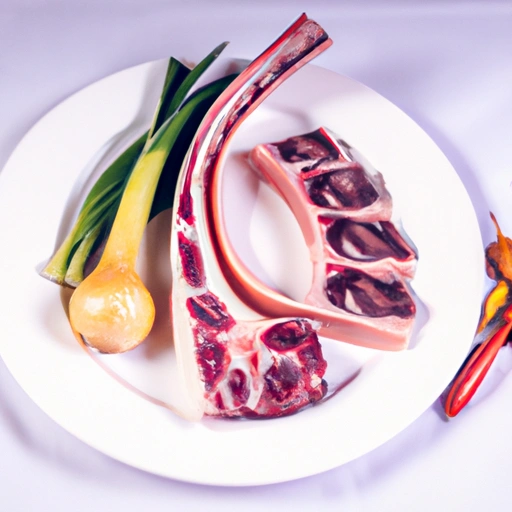Beef Shank
Description

Beef shank refers to a cut of beef taken from the lower leg of the animal, specifically the area between the knee and the ankle. It includes a cross-section of the leg bone along with the surrounding muscles and tendons. Known for its rich marrow and deep, beefy flavor, beef shank is a tough cut that benefits from long, slow cooking methods to break down the dense connective tissue and release its succulent potential.
Common uses
Beef shank is commonly used in dishes that require prolonged cooking times, such as soups, stews, osso buco, and braised beef recipes. It's also a popular choice for making rich and flavorful stocks and broths due to the marrow in the bone.
Nutritional value
Calories
On average, a 3-ounce (85g) serving of cooked beef shank contains approximately 150-170 calories.
Protein
Beef shank is an excellent source of protein, providing around 28 grams per 3-ounce (85g) serving.
Fat
The cut contains a moderate amount of fat, with about 4-8 grams per 3-ounce (85g) serving, depending on how much external fat is trimmed away.
Carbohydrates
Beef shank is a carbohydrate-free food, containing 0 grams of carbohydrates per serving.
Vitamins
It is a good source of B vitamins, particularly vitamin B12, which is important for nervous system health.
Minerals
Beef shank is also rich in minerals like iron, phosphorus, zinc, and selenium.
Health benefits
Consuming beef shank can contribute to muscle growth and maintenance due to its high protein content. The presence of bone marrow can provide collagen, which supports joint health. The minerals such as iron aid in preventing anemia, while zinc supports immune function.
Potential risks
Beef shank is a red meat, and excessive consumption of red meat may be associated with an increased risk of certain health conditions, such as heart disease and certain cancers. It's advised to consume it in moderation within a balanced diet.
Common recipes
Beef shank is a key ingredient in recipes like beef bourguignon, Italian osso buco, and various global cuisines' slow-cooked stews and broths.
Cooking methods
Slow braising, stewing, and sous-vide are ideal cooking methods for beef shank, as they allow the tough fibers to break down over time, resulting in a tender and flavorful dish.
Pairing with other ingredients
Beef shank pairs well with hearty vegetables like carrots, potatoes, and celery, as well as with robust herbs and spices such as rosemary, thyme, and bay leaves. It's also commonly served with starches like mashed potatoes, polenta, or crusty bread to soak up the rich sauce.
Summary
Beef shank is a hearty, flavorful, and nutrient-dense cut of meat that shines when given the slow-cooking treatment. It has played an essential role in traditional cooking around the world and continues to be used in a variety of dishes that are celebrated for their depth of flavor and comforting qualities. While it is a healthy source of protein and minerals, it should be enjoyed in moderation as part of a balanced diet.